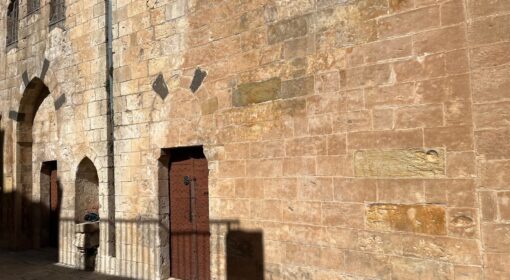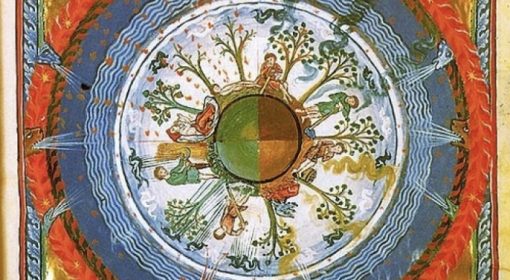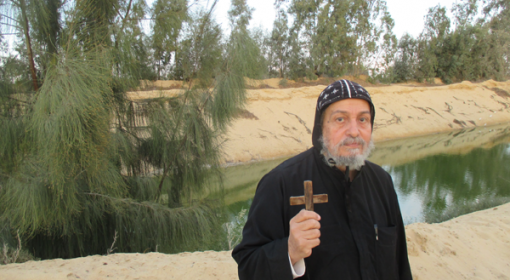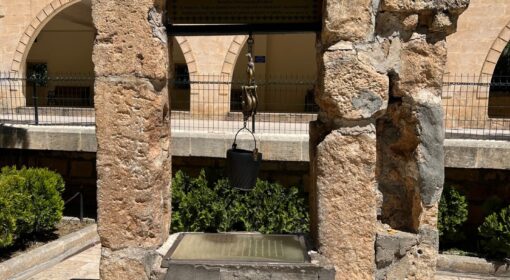By Frank van Steenbergen
In the Safran Mor Hananyo Monastery just outside Mardin in Tur Abdin (Southeast Turkey) – first established in the fifth century – there is an ancient baptismal font that is 1000 years old. Baptizing is the basic ritual of water. What does it mean to enter, immerse, and re-emerge?
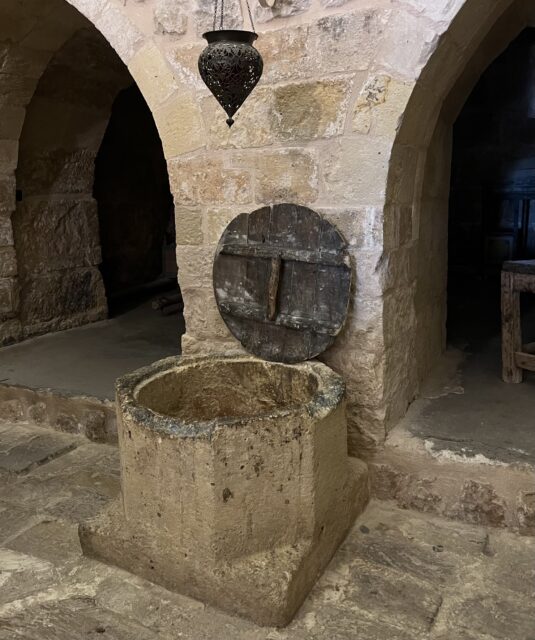
Baptism is how one enters Christianity. The Didache or Teaching of the Twelve Apostles gives a description of the ritual already The Didache is a short guide for early Christians. It was widely circulated and defined practice in the early communities of believers. The first known version of the Didache dates from 60–80 AD. This is what the Didache says about baptism:
“And concerning baptism, in this manner baptize: when you have gone over these things, baptize in the name of the Father, and the Son, and the Holy Spirit, by immersing in running water. If you do not have running water, baptize in other water. If you are not able to use cold water, use warm. And if you have neither running or standing water, pour water on the head three times, in the name of the Father, the Son, and the Holy Spirit. And before baptism, the one baptizing and the one to be baptized should fast, as well as any others who are able. And you should instruct the one being baptized to fast one or two days before.”
In Early Christianity having a belief was high risk. One would enter a life with the possibility of arrest, persecution, even torture and death. In the first centuries AD thousands of Christians were captured, enslaved, tortured, and martyred in the front of wild animals or gladiators. Belief was an act of choice and of fearlessness – not of default, as it is often now.
With this risky passage of baptism, one not only joined the vulnerable community of Christians, but also at spiritual level with baptism all sins were forgiven – even the burden of the first birth and the original sin. It was after baptism that one would reemerge as a new person, in the similar way as Jesus was resurrected from the death after suffering. One would only then be on the way to the Kingdom of God. As is written in the Gospel of John 3:5-6.
“ Jesus replied, “What I am telling you so earnestly is this: Unless one is born of water and the Spirit,[ he cannot enter the Kingdom of God. Men can only reproduce human life, but the Holy Spirit gives new life from heaven.”
What is remarkable is the simplicity of the baptism ritual. Despite the enormous transformation, there is no complex rite of initiation. Just a few words and the contact with water. It is the simplicity that is the essence of mystery – no formula, not trying to interpret or follow an intermediary but the direct contact with God, immerse in his infinity and all pervasiveness. Acceptance, no reasoning. Captured in the nature of water – ever moving, ever changing in form, invisible as vapor, visible in blessed droplets, there before the beginning of Creation and there beyond the end.
The ancient baptismal font In the Safran Mor Hananyo Monastery has eight sides, double the number of main directions. Eight is the number of the resurrection – Jesus rose on the Eight Day, the day after the sabbath – remembering the day when God had rested after completing his Creation. Eight also refers to the biblical flood that wiped out the people, that had become wayward, and restarted with a generation of eight, that emerged from the Ark of Noah to become the basis of the new mankind after the flood. 1 Peter 3:20 again describes how sin dissolves in water and life restarts:
“They are like those who disobeyed long ago in the days of Noah when God waited patiently while Noah built the ship. In this ship a few people—eight in all—were saved by water.”
Tur Abdin also has its own tragic story of persecution, almost in still living memory. It was the scene of massacre of Assyrian Christians, the Sayfo, during the disturbed era of World War 1. It led to the demise of this population in the area but also to their re-emergence in many Assyrian communities all over the world.
